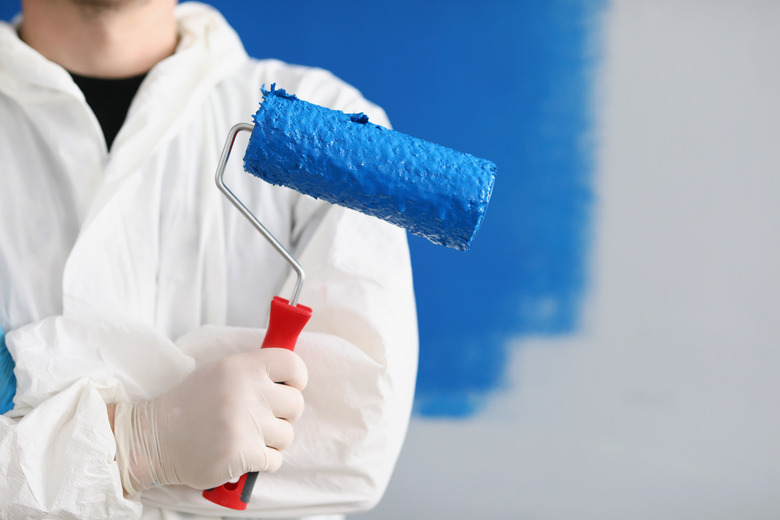Painting Over Semigloss Paint
We may receive a commission on purchases made from links.
Semigloss and satin are two of the most popular wall paint sheens because they combine the reflectivity of a gloss sheen with the ability to hide defects characteristic of a matte finish. Besides being shiny, gloss and semigloss paints are easy to clean, owing to the higher percentage of binders in the paint mixture. That means new paint has a harder time adhering to it than it does to a matte finish.
That doesn't mean you can't paint over a semigloss finish, and you don't have to change the sheen of your topcoat either. Painting semigloss over semigloss maintains the appearance while giving the old paint a clean, fresh appearance. You just need to properly prepare the surface before you paint.
Scuff Sand and Degloss
Scuff Sand and Degloss
Perhaps the best way to prepare semigloss paint for a fresh topcoat is to scuff sand to rough up the surface. You can do this by hand — no need to use a sander — but because you probably can't reach the top of the walls, you're better off using a pole sander. Slip on a sheet of 120-grit sandpaper and sand just enough to dull the finish. Don't forget to lay drop cloths on the floor before you start to avoid a messy cleanup.
If sanding sounds like too much work, you can also use a chemical deglosser to dull the finish. If you don't want to use a commercial product, you can make your own deglosser by mixing a half cup of ammonia in a gallon of warm water. Wash the walls with this solution and then rinse with clean water and let the wall dry. It's now ready for repainting.
You May Need a Primer
You May Need a Primer
Generally speaking, you should coat existing oil-based paint with more oil-based paint, but how can you tell if the existing paint is oil- or water-based? The answer is to moisten a cotton swab with alcohol and rub the paint vigorously. If the swab takes on the color of the wall — which means the paint has rubbed off — it's water-based paint. If there's no color on the swab, then the paint is oil-based.
Even if you find the existing paint to be oil-based, you're unlikely to find interior oil-based paint available. Many states have outlawed it because of its high volatile organic compound content. The solution is to apply a water-based primer over the paint before you paint. Primer adheres better to surfaces than paint, and fresh paint adheres better to primer than it does to old paint.
One Coat or Two?
One Coat or Two?
You may be able to get by with a single coat if your new paint is the same color as the existing paint. In most cases, however, it's better to plan on two coats because the first coat seldom covers completely. However, if you have to apply a primer, it can count as a first coat if you tint it to a hue close to that of the paint you're going to use.
One possible exception to the two-coat rule is self-priming paint. It's a high build mixture with plenty of solids, and even if the color is radically different from the existing paint, it often hides well enough to give complete coverage in a single coat. Because the primer is included in the mixture, you can also use this to paint over oil-based paint.
